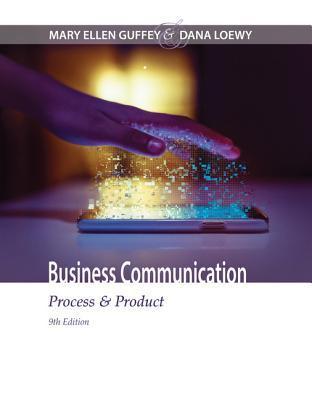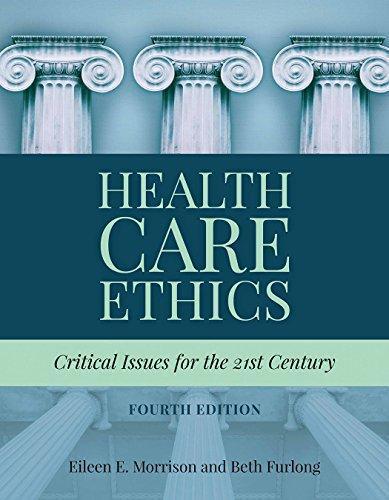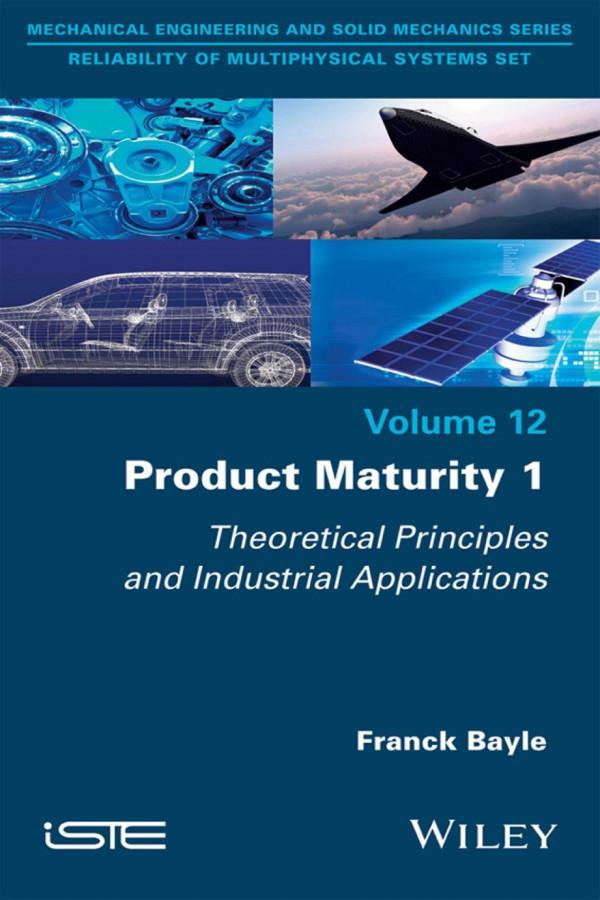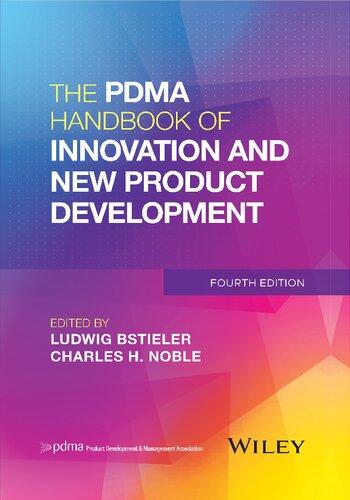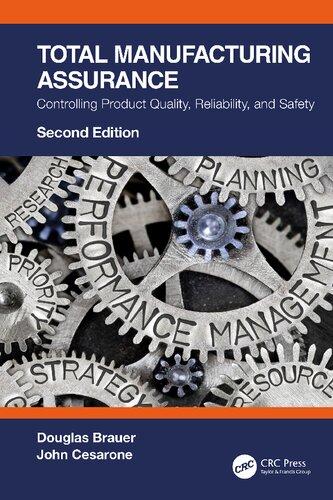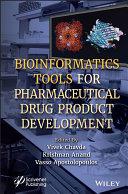DecisionEngineering
SeriesEditor
RajkumarRoy,SchoolofMathematics,ComputerScienceandEngineering (MCSE),CityUniversity,London,UK
TheDecisionEngineeringseriesfocusesonthefoundationsandapplicationsof toolsandtechniquesrelatedtodecisionengineering,andidenti fiestheirrolein makingdecisions.Theseriesprovidesanaidtopractisingprofessionalsandapplied researchersinthedevelopmentoftoolsforinformedoperationalandbusiness decisionmaking,withinindustry,byutilisingdistributedorganisationalknowledge. Seriestopicsinclude:
– CostEngineeringandEstimating,
– SoftComputingTechniques, – ClassicalOptimizationandSimulationTechniques, – MicroKnowledgeManagement(includingknowledgecaptureandreuse, knowledgeengineeringandbusinessintelligence),
– CollaborativeTechnologyandConcurrentEngineering,and – RiskAnalysis.
Springerwelcomesnewbookideasfrompotentialauthors.Ifyouareinterested inwritingfortheDecisionEngineeringseriespleasecontact:AnthonyDoyle (SeniorEditor-Engineering,Springer)andProfessorRajkumarRoy(SeriesEditor) at: anthony.doyle@springer.com
Moreinformationaboutthisseriesat http://www.springer.com/series/5112
JohnStark JohnStarkAssociates
Geneva,Switzerland
ISSN1619-5736ISSN2197-6589(electronic) DecisionEngineering
ISBN978-3-030-28863-1ISBN978-3-030-28864-8(eBook) https://doi.org/10.1007/978-3-030-28864-8
1st–3rd edition: © SpringerNatureSwitzerlandAG2005,2011,2015 4th edition: © SpringerNatureSwitzerlandAG2020
Thisworkissubjecttocopyright.AllrightsarereservedbythePublisher,whetherthewholeorpart ofthematerialisconcerned,specificallytherightsoftranslation,reprinting,reuseofillustrations, recitation,broadcasting,reproductiononmicrofilmsorinanyotherphysicalway,andtransmission orinformationstorageandretrieval,electronicadaptation,computersoftware,orbysimilarordissimilar methodologynowknownorhereafterdeveloped.
Theuseofgeneraldescriptivenames,registerednames,trademarks,servicemarks,etc.inthis publicationdoesnotimply,evenintheabsenceofaspecificstatement,thatsuchnamesareexemptfrom therelevantprotectivelawsandregulationsandthereforefreeforgeneraluse.
Thepublisher,theauthorsandtheeditorsaresafetoassumethattheadviceandinformationinthis bookarebelievedtobetrueandaccurateatthedateofpublication.Neitherthepublishernorthe authorsortheeditorsgiveawarranty,expressedorimplied,withrespecttothematerialcontained hereinorforanyerrorsoromissionsthatmayhavebeenmade.Thepublisherremainsneutralwithregard tojurisdictionalclaimsinpublishedmapsandinstitutionalaffiliations.
ThisSpringerimprintispublishedbytheregisteredcompanySpringerNatureSwitzerlandAG Theregisteredcompanyaddressis:Gewerbestrasse11,6330Cham,Switzerland
Preface
ThisisthefourtheditionofwhathasbecomethePLMReferenceBook.Product LifecycleManagement(PLM)isthebusinessactivityofmanaging,inthemost effectiveway,acompany’sproductsallthewayacrosstheirlifecycles;fromthe very firstideaforaproductallthewaythroughuntilitisretiredanddisposedof.
PLMisabout “managingproductsacrosstheirlifecycles”,anditappliestoany companywithaproduct.Itappliesinallsizesofcompanies,rangingfromlarge multinationalcorporationstosmallandmediumenterprises.It’sappliedacrossa widerangeofindustrialsectorsincludingaerospace,apparel,automotive,beverage, consumergoods,constructionequipment,defence,electricalengineering,electronics,food,lifesciences,machinery,machinetool,mechanicalengineering, medicalequipment,pharmaceutical,plastics,shipbuilding,shoe,software,transportationandturbine.
Inthemiddleofthetwentiethcentury,between1945and1970,thingschanged littleintheworldofproducts.Companies,andtheirexecutives,managersand employeesworkedouthowtosucceedinthatenvironment.Theyhadanaccepted wayofthinking,aparadigm,aboutthewayproductsweremanaged.Forexample, companieswereorganisedbydepartment,therewasamultilevelhierarchyof middlemanagers,informationwasonpaper,secretariesproducedtechnicalreports ontypewriters,andengineersusedsliderulesforcalculations.TheIronCurtain dividedthecapitalistWestfromthecommunistEast.IntheUSandWestern Europe,engineerswerepredominantlymen,whiteandwhite-shirted.
The1970ssawthebeginningofaperiodofachange.It’sworthremembering thatIntelwasfoundedin1968,Microsoftin1975andApplein1976.
Between1970and2015,forvariousreasons,theproductlandscapechanged rapidlyandsignifi cantly.ManynewproductsappearedasaresultoftheElectronics Revolution,theSoftwareRevolution,theBiotechnologyRevolutionandthe NanotechnologyRevolution.TheInternetandtheWorldWideWebemerged. Manynewproductsweremechatronic,containingmechanical,electrical,electronic andsoftwarecomponents.Thedevelopmenttimeandthelifetimeofmanyproducts wasslashed.Aswellaschangesinproducts,therewerechangesintheenvironment inwhichproductsweresoldandused.Thereweregeopoliticalchangessuchas
globalisation,theendoftheColdWarandtheemergenceofChinaasamajor manufacturingcountry.Otherchangesresultedfromconcernsaboutglobal warming,theenvironmentandsustainability.Inresponsetoallthesechanges,the paradigmformanagingproductschanged.Thenewparadigm,PLM,emergedatthe beginningofthetwenty- firstcentury.
Whatisthisnewparadigm?Inotherwords,howshouldacompany,itsexecutives,managersandemployeesbeorganisedandworkinthisnewenvironment? Andanotherquestion,howshouldacompanytransitionfromtheoldparadigmto thenewparadigm?Whatsetofactionswillacompanyhavetoexecutetoachieve thechange?Thisbookanswersthesequestions.
ThePLMparadigmemergedatthebeginningofthetwenty- firstcentury,andhas beenevolvingsincethen.Itwasdescribedinthe firsteditionofthisbook,which waspublishedin2004.Thesecondeditionofthebookwaspublishedin2011,the thirdeditionin2015.Sincethen,theparadigmhascontinuedtoevolve.Therehave beenmorechangesintechnologies,productsandthePLMenvironment.PLMhas becomemoreandmoreimportant.And,duetotechnologicaladvancesinareas suchasSmartProducts,theInternetofThings,Industry4.0andArtifi cial Intelligence,newopportunitiesforPLMhaveappeared.Thisfourtheditionofthe bookaddressestheseadvancesandtheever-increasingapplicationofPLM.Asfor thepreviouseditions,itdrawsontheextensivePLMconsultingactivitiesand experienceoftheauthor.
Theunderlyinglogicforthestructureandcontentofthebookisbuiltonthe PLMGrid,aconceptoutlinedinthe firstchapter.ThePLMGridshowstheten components:(products;businessprocesses;productdata;theProductData Managementsystem;otherPLMapplications;facilitiesandequipment;techniques; people;managementandorganisation;andobjectivesandmetrics)thathavetobe addressedwhenmanagingaproductacrosstheproductlifecycle.
Thebookhas15chapters.The first2chaptersintroducePLMandthePLM environment.Chapter 3 addressesproducts.Chapter 4 focusesonbusinessprocesses.ThesubjectofChapter 5 isproductdata.Chapter 6 addressesProductData Managementsystems.Chapter 7 looksatotherPLMapplications.Thecontent ofthefollowingchapterincludestechniquesandmethodsinthePLMenvironment. ThesubjectofChapter 9 istheInternetofThings.ThatofChapter 10 isIndustry4. 0andthemanufacturingenvironment.Chapters 11 and 12 addressOrganisational ChangeManagement(OCM)andprojectmanagement.Chapter 13 looksattherole ofexecutivesinPLM,Chapter 14 atthePLMInitiative.Chapter 15 givesexamples ofPLMinindustry.
Manyofthechaptersaddresssubjects,forexample,OCM,thatarehugeareasin themselves.Therearealreadymanybooksaddressingthesesubjects.Theintention ofthesechaptersisn’ttorepeateverythingknownaboutthesubject.Instead,it’sto provide,forthespecificenvironmentofPLM,anintroductionthatwillenable peopletoworkmoreeffectivelyonPLMactivities.Thebookcanbethoughtofas “PLM101”.Itwillbeusefulforthoseworkingonacompany’sPLMactivities.It willbeagoodon-boardingtoolforanyonejoiningaPLMInitiative.Itwillalsobe usefulforundergraduateandpostgraduateuniversitystudentslearningaboutPLM.
Theauthorhasworkedwithmorethana100companiesofmanysizes,andin manyindustries,duringtheemergenceandgrowthofPLM.Sharingtheresulting experienceandknowledgemeetstheinnatehumandesiretoimprovetheWorld. PLMis,ofcourse,importantforcompanies.ByadoptingandimprovingPLM, companiesincreaseproductrevenues,reduceproduct-relatedcosts,maximisethe valueoftheproductportfolio,andmaximisethevalueofcurrentandfuture productsforbothcustomersandshareholders.But,inawidersense,PLMisalso importantforMankind.Theplanet’s7billioninhabitantsallrelyonproductsof varioustypes,andthegreatmajoritywouldbenefi tfromfaster,easieraccessto betterproducts.PLMisawin-winforusall. Geneva,SwitzerlandJohnStark
3.3.1RangeofParts
3.4.6ProductKey
3.4.7NamingLanguages
3.4.8SomeProductandPartIdenti
3.7.3InternationalMobileEquipmentIdentity
3.10CommunicationofIdentifi
3.10.1TypeofCommunication
3.10.2UPCBarcode
3.10.3EAN-13
3.10.4Two-DimensionalBarcodes
3.12Versions,Variants,Options
3.12.1LifecycleState
3.12.2Version,Iteration
3.12.3Variant,Option
3.12.4ProductLife,Lifetime
3.15Description,De
4.2.1De fi
4.2.2ActionAcrosstheProductLifecycle
4.2.3OrganisingtheAction
4.2.4ProcessApproach
4.2.5ToolstoRepresentBusinessProcesses
4.3ProcessRealityinaTypicalCompany
4.3.1GenericIssueswithBusinessProcesses
4.3.2InteractionwithOtherActivities
4.3.3InteractionwithCompanyInitiatives
4.3.4GenericChallengeswithBusinessProcesses
4.3.5AGenericVisionforBusinessProcessesinPLM
4.4.1ProjectsRelatedtoBusinessProcesses
4.4.2BusinessProcessImprovement
4.4.3BusinessProcessMappingandModelling
4.4.4TheECMBusinessProcess
4.4.5TheNPDBusinessProcess
4.4.6ThePortfolioManagementProcess
4.5LearningfromExperience
4.5.1FromtheTrenches
4.5.2BusinessProcessImprovementApproach
5.1.3RelevanceofProductDatainPLM
5.2De fi
5.2.3OrganisingtheProductData
5.2.4ProductDataasaStrategicResource
5.2.5ToolstoRepresentProductData
5.2.6DataModelDiagrams
5.2.7KPIsforProductData
5.2.8TheImportanceofProductDatainPLM
5.3RealityinaTypicalCompany
5.3.1GenericIssueswithProductData
5.3.2InteractionwithOtherActivities
5.3.3InteractionwithCompanyInitiatives
5.3.4GenericChallengesandObjectives
5.3.5AGenericVisionforProductDatainPLM
5.4ProductDataActivitiesinthePLMInitiative
5.4.1ProductData-RelatedProjects
5.4.2ProductDataModelling
5.4.3ProductDataImprovement
5.4.4ProductDataCleansing
5.4.5ProductDataMigration
5.5LearningfromExperience
5.5.1FromtheTrenches
5.5.2ProductDataImprovementApproach
5.5.3PitfallsofProductDataModelling
5.5.4TopManagementRolewithProductData
6.1.3De
6.1.4RelevanceofPDMSystems
6.4ImportanceofthePDMSystem
6.5Benefi tsofPDMSystems
6.6TheEightComponents
6.6.1InformationWarehouse
6.6.2InformationWarehouseManager
6.6.3Infrastructure
6.6.4SystemAdministrationManager
6.6.5InterfaceModule
6.6.6ProductandWork flowStructureDe
6.6.7Work flowControlModule
6.6.8InformationManagementModule
6.7CommonIssues
6.7.1Naming,Functionality,Scope
6.7.2Change,VersionManagement
6.7.3Interfaces .................................
6.7.4DataModel,Work flow
6.7.5Ownership,Funding,Support
6.7.6FitinISArchitecture
6.7.7Customisation,Installation
6.7.8EverydayUse ..............................
6.7.9SourcesofChallenges ........................
6.8GuidelinesforPDMSystemImplementation
6.9PitfallsofPDMSystemImplementation
6.10LittleDataManagementExcitement
6.11NoPDMSystemIsanIsland
7PLMandProduct-RelatedApplications
7.1ThisChapter
7.1.1Objective
7.1.2Content
7.1.3De finition .................................
7.1.4RelevanceofPLMApplications
7.2IntroductiontoPLMApplications
7.2.1AdditiveManufacturingApplications
7.2.2ApplicationLifecycleManagement
7.2.3Arti ficialIntelligence ........................
7.2.4AugmentedReality
7.2.5BOMApplications ..........................
7.2.6ComplianceManagement
7.2.7CSMApplications
7.2.8CADApplications
7.2.9CAEApplications
7.2.10CAIDApplications
7.2.11CAMApplications
7.2.12CAPEApplications
7.2.13CAPPApplications
7.2.14CASEApplications
7.2.15CIM
7.2.16DataExchangeApplications
7.2.17DECMApplications
7.2.18DigitalManufacturingApplications
7.2.19DMUApplications
7.2.20EDIApplications
7.2.21EDAApplications
7.2.22ECMApplications
7.2.23EDMSystems
7.2.24FactoryAutomation .........................
7.2.25FEAApplications ...........................
7.2.26GeometricModellingApplications
7.2.27HapticApplications
7.2.28IMApplications ............................
7.2.29IoTPlatforms ..............................
7.2.30IPMApplications ...........................
7.2.31KnowledgeBasedSystems
7.2.32LCAApplications
7.2.33MachineLearningApplications
7.2.34ManufacturingAutomation
7.2.35MRP2Applications
7.2.36NCApplications
7.2.37PartsCatalogueApplications
7.2.38PartsLibraries
7.2.39Phase-GateApplications
7.2.40PortfolioManagementApplications
7.2.41PDMSystems
7.2.42ProjectManagementApplications
7.2.43RPApplications ............................
7.2.44RequirementsManagementApplications
7.2.45ReliabilityManagementApplications
7.2.46SimulationApplications
7.2.47SCMApplications
7.2.48ServiceManagementApplications
7.2.49TDMApplications
7.2.50TechnicalPublicationApplications
7.2.51TranslationManagementApplications
7.2.52VRApplications
7.2.53VEApplications
7.2.54VirtualPrototypingApplications
7.2.55VisualisationandViewingApplications
7.2.563DPrintingApplications
7.2.573DScanningApplications
7.3PLMApplicationsintheProductLifecycle
7.3.1GenericandSpecifi cPLMApplications
7.3.2GenericPLMApplications
7.3.3Speci ficPLMApplications
7.3.4OrganisingtheApplications
7.3.5KPIsforPLMApplications
7.4RealityinaTypicalCompany
7.4.1GenericIssueswithPLMApplications
7.4.2InteractionwithOtherActivities
7.4.3InteractionwithCompanyInitiatives
7.4.4GenericChallengeswithPLMApplications
7.4.5AGenericVisionforPLMApplications
7.5ApplicationActivitiesinthePLMInitiative
7.5.1Application-RelatedProjects
7.5.2PLMApplicationStatusReview
7.5.3SoftwareDevelopmentApproaches
7.5.4PDMSystemSelectionandImplementation
7.6BestPracticePDMSystemSelection
7.6.1PreparethePDMSystemProject
7.6.2DocumenttheBusinessObjectives
7.6.3DocumenttheCurrentSituation
7.6.4IdentifyPDMSystemRequirements
7.6.5KnowYourPartners
7.6.6Pre-alignwithYourPartners
7.6.7AlignandPlanwithYourPartners
7.6.8CarryOutDetailedDesignandPlanning
7.6.9BuildandPlanthePDMSystem
7.6.10TestandValidatethePDMSystem
7.6.11DeploythePDMSystem
7.6.12UsethePDMSystem ........................
7.6.13SupportandSustainthePDMSystem
7.6.14ReviewPDMSystemPerformance
7.6.15AchieveBreakevenforthePDMSystem
7.6.16EvolveandExtendthePDMSystem
7.7LearningfromExperience
7.7.1FromtheTrenches
7.7.2PitfallsofApplicationImplementation
7.7.3TopManagementRolewithPLMApplications
8.2.1TheNeed
8.2.2ImprovementInitiatives
8.3OverviewofMethods
8.3.1ABC
8.3.5CWQC ..................................
8.3.6ConcurrentEngineering
8.3.7CM .....................................
8.3.8ContinuousImprovement
8.3.9COQM ..................................
8.3.10CustomerInvolvement
8.3.11DFA ....................................
8.3.12DfE .....................................
8.3.14DFR
8.3.17DesignRules
8.3.18DTC
8.3.19EMI
8.3.20ESI
8.3.21FMECA
8.3.22FTA
8.3.23GT .....................................
8.3.24HoshinKanri ..............................
8.3.25JIT
8.3.26KomeHyappyo
8.3.29LCD ....................................
8.3.30OpenInnovation ............................
8.3.31Phase/GateMethodology
8.3.32PDCA
8.3.33PlatformStrategy
8.3.34Poka-Yoke
8.3.35ProcessMapping
8.3.36ProjectManagement
8.3.37QFD
8.3.38Roadmapping
8.3.39ReliabilityEngineering
8.3.40RobustEngineering
8.3.41SimultaneousEngineering
8.3.42SoftwareDevelopmentMethodologies
8.3.43Standards
8.3.46SystemEngineering
8.3.49TCO ....................................
8.3.50TQ .....................................
8.3.51TQM
8.3.52TRIZ
8.4SomeCharacteristicsofMethods
8.4.4ConfusionBetweenMethodsandProcesses
8.4.5DuplicationofExistingActivities
8.4.6UnclearDefi nition
8.4.7UnclearImprovements
8.4.8DifficulttoImplement
8.4.9MethodEvolutionandConfusion
8.4.10MarketPush
9.3.1TheInternet,aCommunicationsNetwork
9.3.2IoTDevices
9.3.3SmartProducts,IntelligentProducts
9.3.4DataTransmittedOveraNetwork
9.3.6LocationDetectionTechnology
9.3.8Cybersecurity
9.3.10IoTPlatforms
9.4.1IntroductiontoBigData
9.4.2ThreeContextsofBigData
9.4.3CommercialBigData
9.4.4SocialMediaandGeneralInternetBigData
9.4.5IndustrialBigData ..........................
9.4.6BigDataAcrosstheProductLifecycle
9.5Analytics ........................................
9.5.1TypicalBenefitsofAnalytics
9.5.2TheValueofBigData
9.5.3LifecycleApplicationAreasofBigData
9.6.1QuestionsAboutBigData
9.6.2TypicalIssueswithBigData
9.6.3TypicalIssueswithBigDataProjects
9.6.4BigDataSuccessFactors
9.7PLM,IoTandBigData
9.8TheOpportunityoftheInternetofThings
fitswiththeInternetofThings
9.10.4IoT,BigDataandthePLMInitiative
10.3Industry4.0TechnologiesandBuzzwords
10.3.1TechnologiesofIndustry4.0
10.3.2TheIndustrialIoTandIndustry4.0
10.4BacktothePLMGrid
10.4.1PLMApplications
10.4.2FacilitiesandEquipment
10.4.3RelationshipwithPLM
10.5Industry4.0FacilitiesandEquipmentVision
10.5.1AnIntelligentFactory ........................
10.5.6In-ChargeFactory
10.5.7Adaptable,FlexibleFactory
10.5.8Secure,ProtectedFactory
10.5.9Arti ficialIntelligenceAugmentedFactory
10.5.10AdditiveManufacturing
11.2.5ResistancetoChange
11.2.6PrerequisitesforOrganisationalChange
11.2.7KPIsforOrganisationalChange
11.2.8TheImportanceofOCMinthePLMEnvironment
11.3.1Benefi tsoftheChangetoPLM
11.4.1GenericIssueswithChange
11.4.2OCMInteractionwithCompanyResources
11.6.1TipsfromtheTrenches
11.6.2BeRealistic
12.2.2CharacteristicsofProjects
12.2.3PeopleinProjects
12.2.4ProjectPhases
12.3.1GenericIssueswithProjects
12.3.2GenericIssueswithProjectPlans
12.3.3InteractionwithOtherActivities
12.4ProjectManagementActivitiesinthePLMInitiative
12.4.1ProjectManagementandInitiativeProjects
finitionandIntroduction
14.2.2FromComponentstotheInitiative
14.2.3DifferentCompanies,DifferentInitiatives
14.3GettingStartedwithPLM
14.3.1MiddleManagers,Executives
14.3.2CompanyandPersonalDilemmas
14.4.1StandardApproach
14.4.2TheTen-StepApproach
14.5.1FromtheTrenches
14.5.2PitfallsforthePLMInitiative
14.5.3ExamplesofthePLMDilemma
14.5.4ResultsofUseoftheTen-StepApproach
14.5.5CommonFeaturesofPLMInitiatives
14.5.6TopManagementRoleinthePLMInitiative
15.2AlfaLaval’sOnePLM
15.2.1TheStartingSituation
15.2.2TheApproach
15.2.3TheImplementation
15.2.4TheResult,Benefi
ProductLifecycleManagement(PLM)
1.1WhatIsPLM?
1.1.1DefinitionofPLM
ProductLifecycleManagement(PLM)isthebusinessactivityofmanaging,inthe mosteffectiveway,acompany’sproductsallthewayacrosstheirlifecycles;from theveryfirstideaforaproductallthewaythroughuntilitisretiredanddisposedof.
PLMisthemanagementsystemforacompany’sproducts.Itdoesn’tjustmanage oneofitsproducts.Itmanages,inanintegratedway,allofitspartsandproducts,and theproductportfolio.PLMmanagesthewholerange,fromindividualpartthrough individualproducttotheentireportfolioofproducts.
Atthehighestlevel,theobjectiveofPLMistoincreaseproductrevenues,reduce product-relatedcosts,maximisethevalueoftheproductportfolio,andmaximisethe valueofcurrentandfutureproductsforbothcustomersandshareholders.
1.1.2DefinitionofthePLMInitiative
ThePLMInitiativeofacompanyisaninitiativewithtwoobjectives.Thefirstof theseistoimprovetheproduct-relatedperformanceofthecompany(Fig. 1.1).The
Fig.1.1 TypicaltargetsofaPLMInitiative
©SpringerNatureSwitzerlandAG2020 J.Stark, ProductLifecycleManagement(Volume1),DecisionEngineering, https://doi.org/10.1007/978-3-030-28864-8_1
otherobjectiveistoputinplace,ortoimprove,thecapabilitytomanageproducts acrosstheirlifecycles.
WhereasPLMisanon-goingendeavour,aPLMInitiativeisatemporaryendeavour.MostcompanieswillhaveaPLMInitiativeatsometimebetween2020and 2025.
1.1.3AParadigm
ThetitleofthisbookreferstoPLMasa21stCenturyparadigm.Aparadigmis agenerallyagreedandsharedconceptualstructurethatpeopleusetoworkwitha complexsubject.It’sasimplepicturethathelpsthemthinkabout,describe,analyse andcommunicateaboutthesubject.Inthisbook,the“complexsubject”thatis addressedisthemanagementofacompany’sproducts.
Aparadigmisquestionedandtestedineverydayworkandbyeverydayexperience.Aparadigmshiftoccurswhenthemajorityofpeoplefind,througheveryday experienceandanalysis,thattheexistingparadigmnolongerfitstothepractical realityofthesubject.
1.1.3.1TheParadigmBeforePLM
ThePLMParadigmemergedin2001.Thepreviousparadigmforthemanagement ofacompany’sproductswasDepartmental:
• TheMarketingDepartmentdecidedwhichproductswereneededbythemarket
• TheEngineeringDepartmentdesignedthem
• TheManufacturingDepartmentproducedthem
• TheAfter-SalesDepartmentsupportedthem.
ThisDepartmentalparadigmwasgenerallyagreedandsharedformostofthe twentiethcentury.Thereasoningbehinditwasthatthespecialistsinadepartment arethebestequippedtocarryouttheactivitiesofthatfunction.Forexample,specialistsintheEngineeringDepartmentwerebelievedtobebestequippedtocarry outEngineeringactivities.Thelogicbehindthiswasthatengineerslearnaboutthese activitiesatschooloruniversity,arefurthertrainedaboutthem,arehiredtodothem, learnaboutthemfromEngineeringcolleagues,andpracticethemforyearsinthe company.Sowhocoulddothembetter?
Overtime,though,thisreasoningandbeliefindepartmentalabilityimplicitly extendedsothateachdepartmentdidn’tjustcarryoutactivitiesforwhichithad specialistfunctionalknowhow.Itwentmuchfurtheranddecidedeverythingabout itsoperations.Forexample,eachdepartmentdecidedindependentlyhowtoorganise itsactivities,itsdocumentsanditsdata,anditscomputersystems.Eventhough,for example,Marketingspecialistsaren’tspecialistsinorganisingactivities,anymore thanEngineeringspecialistsarespecialistsinIS.
Withtime,thedepartmentalapproachledtoanenvironmentofdepartmentsworkingindependently,interdepartmentalbarriers,incompatibilitiesatdepartmentalborders,waste,gaps,contradictoryversionsofthesamedata,informationsilos,islands ofautomation,overlappingnetworks,duplicateactivities,serialwork,ineffective fixesandproductrecalls.Theendresultwaslongproductdevelopmentandsupport cycles,customershavingproblemswithproducts,reducedrevenuesandhighercosts. Theseanomaliesshowedthatsomethingwaswrongwiththedepartmentalparadigm forthemanagementofacompany’sproducts.
Aparadigmshiftresulted.In2001,anewparadigmforthemanagementofa company’sproducts,thePLMParadigm,emerged.ItwillbedescribedinSect. 1.5, afterbriefsintroductionstothischapter,andtheacronymandscopeofPLM.
1.2ThisChapter
1.2.1Objective
TheobjectiveofthefirstchapterofthisbookistoprovideanintroductiontoPLM, answeringthequestions:“WhatisPLM?”;“WhyPLM?”;“WhendidPLMappear”; and“WhereisPLMused?”Theanswerstothesequestionswillhelpthoseworking withPLMinacompany,includingthoseinvolvedinacompany’sPLMInitiative, tounderstandthebasicsofPLMandwhyit’ssoimportant.Itwillallowthemto addmorevalueandparticipatemorefullyinthePLMInitiativeandPLMactivities. Thischapteralsoaimstogivestudents,forwhomthisbookisacoursebook,abasic understandingofPLManditsimportanceinindustry.
1.2.2Content
ThefirstpartofthechaptergivesdefinitionsofPLMandaPLMInitiative.The secondpartofthechapterlooksatthemeaningofthelettersP,LandMinthePLM acronym.ThethirdpartaddressesthescopeofPLM.ItintroducesthePLMGrid, describesactivitieswithinthescopeofPLM;andidentifiestheresourcesmanagedin PLM.ThefourthpartofthechapterdescribesthePLMParadigm,detailingconcepts, consequencesandcorollaries.Thefifthpartlooksatthepotentialbenefits,strategic andoperational,ofPLMandaPLMInitiative.ThesixthpartshowshowPLMhas spreadsinceitsemergencein2001.Asof2020,it’susedthroughoutmanufacturing industryandthroughouttheworld.Theseventhandfinalpartofthechapterlooksat theproblemsthatPLMsolvesandtheopportunitiesitenables.
1.2.2.1Skills
Fromthischapter,studentswho’vebeenassignedthebookforcourseworkwillgain abasicunderstandingofPLM,aPLMInitiative,andthePLMParadigm.They’ll findoutaboutthemeaningofthePLMacronym.They’llunderstandthescopeof PLM.They’llknowabouttheproblemsthatPLMaddresses.They’llseehowPLM hasspreadthroughoutindustryandacrosstheworld.They’lllearnaboutthebenefits ofPLM.They’llbeabletoexplain,communicateanddiscussaboutPLM.
1.2.3Relevance
PeoplestartingtoworkwithPLMinacompanyarelikelytoaskquestionslike: “WhatisPLM?”;“WhyPLM?”;“WhendidPLMappear”;and“WhereisPLM used?”They’llfindtheanswersinthischapter.ItwillenablethoseworkinginactivitiesacrosstheproductlifecycletorapidlyunderstandPLM.Afterthey’vereadthe chapter,theyshouldunderstandthePLMParadigmanditsessentialcharacteristics andconcepts.They’llknowabouttheoperationalandstrategicbenefitsofPLM. They’llbeabletoworkmoreeffectivelyinPLMactivities.
1.3TheP,LandMofPLM
1.3.1ThePofPLM
1.3.1.1Importance
Theproductisimportant.Whetherit’sachair,abeverage,anaircraft,somesoftware orananaesthetic,it’stheproduct,andperhapssomerelatedservices,thatthecustomerwants.Theproductisthesourceofcompanyrevenues.Withoutaproduct,the companydoesn’tneedtoexistandwon’thaveanycustomers.Withoutaproduct, therewon’tbeanyrelatedservices.Theproductisimportant!Thecompanygeneratesrevenuesfromanon-goingstreamofinnovativenewandupgradedproducts. Greatproductsmakeittheleaderinitsindustrysector.Greatproductsleadtogreat profitability.
1.3.1.2RangeofProducts
There’sahugerangeofproductsintheworld.Therearetangibleproducts,products youcantouch,productssuchasacomputerandacar.Andthereareintangible
productssuchassoftware,insurancepoliciesandmortgages.Thereareproductsas diverseasanAirbusA380andadollarbill,abookandabeverage.
Productscomeinallsortsofshapesandsizes.ThemovementofaSwisswatch maybelittlelongerandwiderthanapostagestamp,andonlyafewmillimetresin thickness.Apostagestampisevensmaller.Manyotherproductsaremuchlarger. Forexample,anAirbusA380is73mlong,withawingspanofnearly80m.
Aproductmayactuallybeaservice.Aproductcanalsobeapackageofservices, orabundleofproductsandservices,orasolutioncontainingseveralproducts,ora solutioncontainingproductsandservices.
Theproductisoftenmorethanwhatseems,atfirstglance,tobetheproduct. Productpackagingisoftenapartoftheproduct.Soisproductlabelling.Theproduct mayincludewiresandplugsthatconnectittotheoutsideworld.Theproductmay includeproductliterature,suchasuserdocumentationorregulatorydocumentation. Theproductmaybeasix-packorasinglecan.Ifit’sasix-pack,itmayhaveadditional packaging,buttheproductyoudrinkisthesameasifit’sasingleitem.Thedelivery mechanismmaybepartoftheproduct.Forexample,insidethepackagingofan anaestheticmaybeasterilesyringe.
Acompany’sproductsmayhavebeendevelopedbythecompanyitself.Orthey mayhavebeenacquiredasaresultofmergerandacquisition(M&A)activity.
1.3.1.3RangeofNumberofParts
Acompany’sproductmaybemadeofmanyassembliesandthousandsofpartsor componentsorconstituentsoringredientsdependingonthetypeofproduct.An assemblymayalsobemadeofalargenumberofparts.Theseassembliesandparts couldbemadebythecompanyitself,orcouldbetheproductsofothercompanies,its suppliers.Manyproductscontainindustrialcomponents(products)ofvarioustypes, suchashardware,software,electrical,electronicandchemical.Manyproductsalso containothertypesofcomponents,suchasagricultural,forestryandfisheryproducts.
AsFig. 1.2 shows,manyproductscontainalotofparts.Manycompanieshave hundredsorthousandsofproductseachofwhichmaycontaindifferentparts.Allof theseneedtobemanaged.Whatevertheproduct,PLMisthemanagementsystem foracompany’sproductsandparts.
Fig.1.2 Typicalnumberof parts,oringredients,ina product

